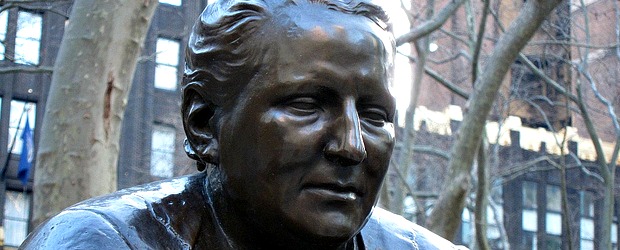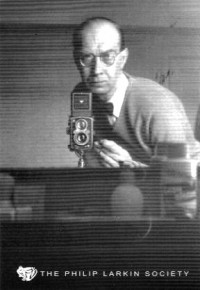You have no items in your cart. Want to get some nice things?
Go shopping
Can ‘modern’ ever equate with ‘enjoyment’ in art or books? And should we worry if it doesn’t?
The British poet Philip Larkin may have been a more than slightly curmudgeonly, grumpy old man in his later years, but the thing that excused a lot of his more aggressive statements about life and art was the fact that he was prepared to forgive a lot in the face of honest enthusiasm. Some of his jazz heroes – George Lewis, for example – are not greats to even Larkin’s untutored ear, but what they lack in talent they make up for in perseverance, endeavour and in a love of doing the simpler things well.
What he really couldn’t stand was anything that smacked of chromatic harmony in jazz, just as he disliked ‘modernism’ in art or poetry.
His rationale was that the emergence of these forms as ‘difficult’ and ‘specialist’ was a direct result of the interest of a rapidly growing academic community, which had to search out these forms in order to find a function. That function of course, was to explain these difficult specialisms to the rest of us.
He would have hated this from Benny Green’s Jazz Encyclopedia:-
Even the most indifferent layman can listen to a performance by anyone from Armstrong to Christian and recognize in it the same language with which he has been made familiar since birth, by lullabies, by nursery rhymes, by national anthems, and the rest of the daily diet of music to which Western man is exposed. But the new musicians… divorced the music once and for all from the mass ear. From here on jazz was to be a musician’s music, its harmonic conventions so convoluted that it became increasingly difficult for the untrained ear to distinguish the justified neologism from the unjustified solecism.
‘Justified neologism?’ ‘Unjustified solecism?’ It’s music, isn’t it?
Larkin found parallels with the language of art and literary criticism, which says that we can no longer look at a ‘work of art’ without having it explained to us, whether the creator was Picasso or Pollock or the latest person to put on display a pile of bricks or a pickled sheep as a work of significance.
‘Ah, but…’ the academics say, ‘What about the fact that things that were initially ‘difficult’ or ‘non-instinctive’ are now part of the accepted mainstream?
And you have to say that they have a point.
I don’t think too many people these days have too much trouble in listening to The Rite of Spring by Stravinsky, and while Ezra Pound’s Cantos (Ezra Pound being one of Larkin’s particular bêtes noirs) are tough going, and most of Gertrude Stein refuses to yield much in the way of pleasure or accessibility, TS Eliot couldn’t be more mainstream.
The rationale for modernity springs from the idea that language, form, content, style – all have to be refreshed continually in order to make us see things as they are. Gertrude Stein’s rose, she argued, presented that rose to us for the first time for many years, and allowed us to see it as it really was. Centuries of language degradation meant that the idea of the rose had to be refreshed and renewed. Whether the childlike removal of punctuation and the curious tenses that make up her ‘continuous present’ actually did what she tried for on any grand scale isn’t really even debatable. It’s just wrong, to the extent that no one followed the path she had cut from the jungle, and the books that most people read today are resolutely grammatical.
There’s nothing new about this. Coleridge and Wordsworth claimed to be creating language anew in their Lyrical Ballads, first published in 1798.
But can anything be truly great (or at least worthy of study and consideration), simply because they it’s different? I don’t think so.
Despite some flashes of light, most of Lyrical Ballads is terrible. Some people would stand up for “I measured it from side to side/Twas three feet long and two feet wide,” but isn’t life too short?[1].

My view, for what it’s worth, is that there is too much reverence directed toward the old simply because it is old, an antique shop approach to art and culture, which sometimes more than balances our open-mouthed reverence for, just to take a few random examples, Tracey Emin’s Unmade Bed, Gilbert and George’s Shit Salad, or virtually anything by William Burroughs.
Personally, I don’t think that these will be much look are much more than the peacock flashing its plumage.
But if they won’t be much looked upon in a hundred years, what will be? I confess that here I am at a loss to say. That may be because no audience will be much interested in the art of today or it may be because I am just not looking at, listening to, or reading, the right things. (Possibly too, because I have no eye, ear or understanding, having not had things explained to me by persuasive enough academics). All three could, confusingly, be true, and your guess is quite as good as mine.
But at the heart of the problem are those academic (and institutional) critics, because, as one leading psychologist has summed up from a century of debate[2], “Modern and post-modern works are intended not to give pleasure, but to confirm or confound the theories of a guild of critics and analysts, to épater la bourgeoisie, or to baffle the rubes in Peoria.”
Or, as the same author puts it from the point of view of the artist, “Artists make their careers by finding ways to avoid the hackneyed, to challenge jaded tastes, to differentiate the cognoscenti from the dilettantes, and to flout current wisdom about what art is.”
So where are we now? Very personally, I can distinguish (I think) some great writing (WG Sebald?) and the odd piece of great drama too, and I’d be willing to make a case for some painters too, but I can’t see where poetry is going unless into a particularly dark passage in its own anatomy.
Is there any light in the darkness?
Well, it’s been fashionable for some time to make the case for Bob Dylan’s lyrics as fine examples of the poetic form (almost proven, I would have said, by Christopher Ricks and others), and surely the sheer volume of the ‘pop’ enterprise would demand that there are other examples out there too, and not just on the basis that a enough monkeys seated at enough typewriters will one day produce a Shakespeare play.
I can think of one example which I would justify as high art, and great poetry too – Warren Zevon’s My Ride’s Here. It so happens that this is a ‘pop song’ co-written by a Pulitzer prizewinning poet, Paul Muldoon. My one example might indicate that poets are flirting with the form, but I don’t know of others. I’m sure someone out there will tell me.
If poets drift or drive themselves into pop (in much the same way, perhaps as each Elizabethan gentlemen tried his hand at the pop medium of the time, a sonnet sequence), I wouldn’t blame them.
If you want an audience today (and surely that is the reason for every artistic enterprise) then you write pop, not poetry. If you do, you write for a global audience of billions. If you don’t, you write for a few hundred middle-aged people who cling to a myth that culture is demonstrable only in traditional and cosy forms, plus a few thousand students being goaded to see wonders (perhaps?) by blind professors.
Perhaps I’m exaggerating. Perhaps even poets are aware of the issue? Take a look perhaps at Welcome, Major Poet[3], by Sean O’Brien, for a poet’s view of the unutterable dullness of some of what we are supposed to be reading, if academic tastes are followed. But then, Sean O’Brien is a principled poet and manages to make a virtuous appeal to us for quality out of a condemnation of the dire standards that are sometimes allowed to exist largely by academics who need to find something to write about.

Is that too cynical a view? Was Larkin right or not about academic clout, and its ability to preserve the unworthy in amber? (Think about Professor Welch in Kingsley Amis’s Lucky Jim for a moment. Larkin and Amis must have talked about this stuff).
Unproven, I think, despite a good deal of evidence that might in other circumstances convict. Unproven because there are young, passionate artists out there and if they want to be noticed, it is the academic community that will help them achieve that goal.
What we want, I suppose, are better academics, who really can distinguish quality and are prepared to champion it. But to say that is just to put a circular argument, and it shouldn’t be me (or you) out there guarding the guards.
For me, art has always been about communication, about explaining our world and our place within it, and I find myself in solid agreement with Ezra Pound when he says that “we advance by discrimination. By finding that things we thought were similar are in fact separate and distinct.”[4] There is every difference between that endeavour, a worthy part of the artistic enterprise it seems to me, and flirting with form for its own sake, which is part of the mental game played between artists and critics.
Unreadable novels, gnomic poetry, art that wouldn’t grace a sixth-form common room, will all be forever the subject of academic discussion, but don’t let you and I get mixed up in that, and let’s all say what we really think, and if it is cheap and the tawdry, tacky and derivative or just worthless, then let’s say so, even if someone else says we’re stupid.
Because unless we do, we’ll get more of it shoved down our throats and more of our museums and art galleries will be cluttered with rubbish. And if we really do want poetry in our lives, it seems to me we’re going to have to seek it out as one seeks membership of the Masons, or listen to a great deal more on our iPods, because pop is the one form that, despite many flailing attempts, stubbornly resists being assimilated into the academic canon.
[1]“The lines, so often ridiculed, about the man who says: ‘I measured it from side to side/ ‘Twas three feet long, and two feet wide’, have a quite terrifying power; how anyone could laugh at the size of the grave of a child, set out like this, is beyond explanation.” A counter view from Philip Hensher in the Observer, reviewing Juliet Barker’s Life of Wordsworth. (29 October 2000)
[2]Stephen Pinker, in his book, How the Mind Works. (WW Norton, 1997)
[3] From Downriver. (Picador, 2001)
[4]Despite all Larkin’s misgivings about Pound’s modernity in terms of form, Pound himself stressed that a lot of his enterprise was involved with rediscovering the old and refreshing it for contemporaries. “All things are a-flowing, sage Heraclitus says” being just one small example, which could take you right into the modernist orthodoxy, as defined by Gertrude Stein.

About Michael Spring
Michael Spring lives and works in London, a city that never ceases to provide inspiration of one kind or another. He works for a graphic design agency now, but has been a director of a PR firm, and an award-winning advertising copywriter. He is @dudley_antipope on Twitter.



